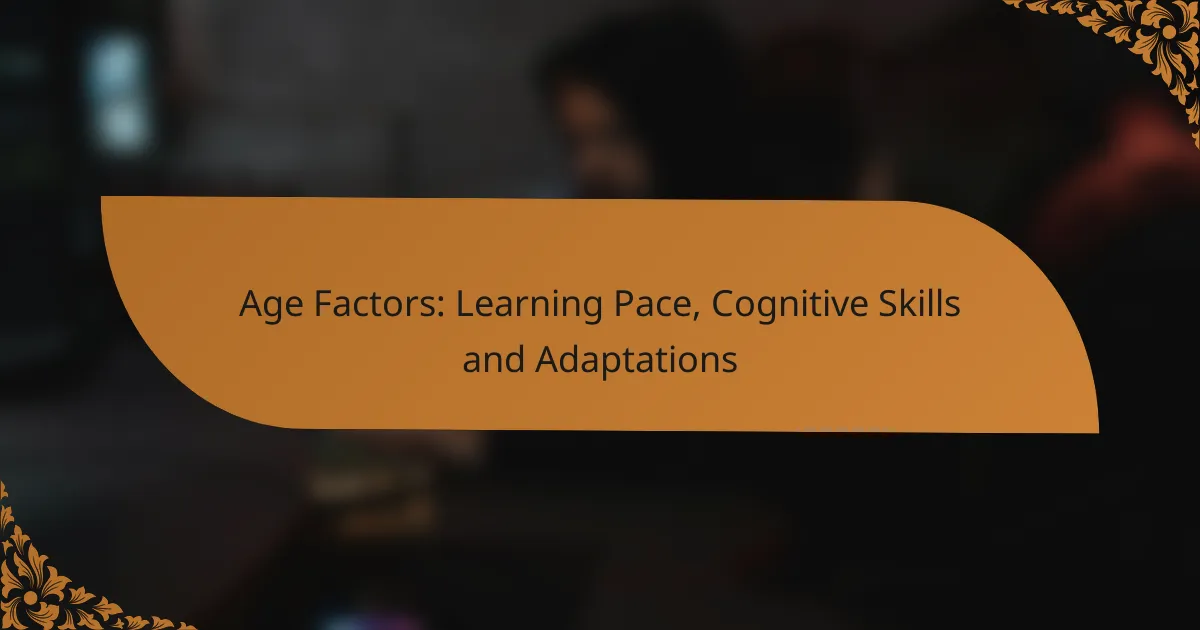Age plays a crucial role in shaping learning pace and cognitive skills, with younger individuals often benefiting from heightened brain plasticity that accelerates their ability to absorb new information. As people age, their cognitive abilities evolve, allowing for deeper understanding of complex concepts, albeit at a potentially slower pace. Tailoring educational experiences to individual needs through adaptations can further enhance learning outcomes, accommodating diverse learning styles and cognitive capacities.
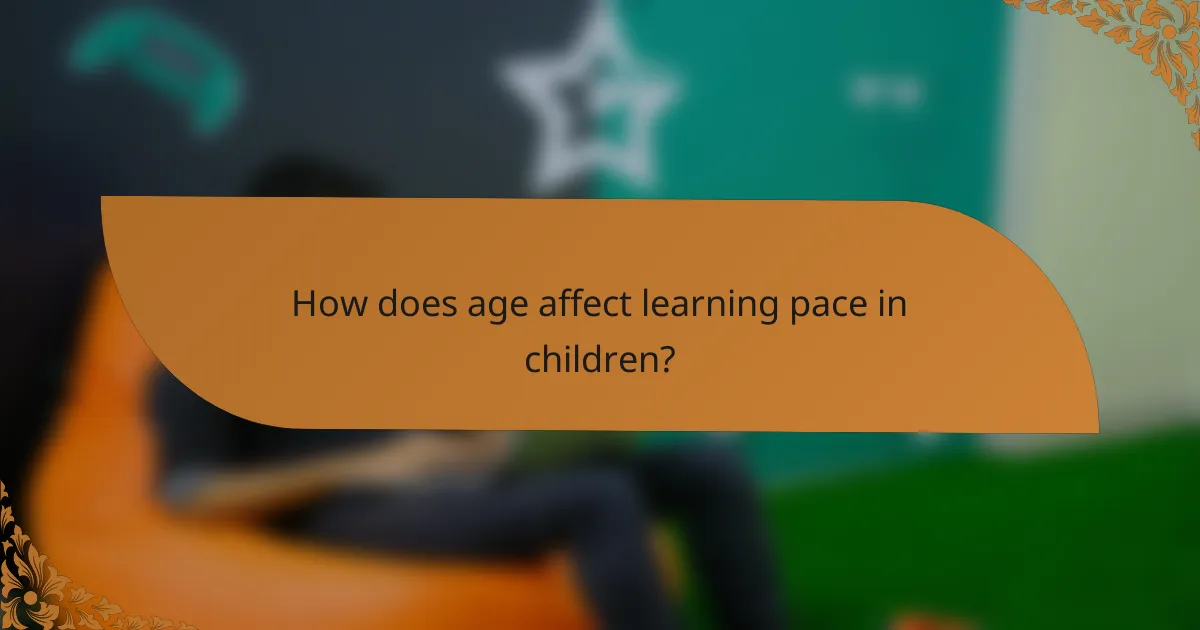
How does age affect learning pace in children?
Age significantly influences the learning pace in children, as cognitive development progresses through various stages. Younger children often learn more quickly due to their brain’s plasticity, while older children may take longer but can grasp complex concepts more deeply.
Influence of developmental stages
Developmental stages play a crucial role in determining how children learn. For instance, preschoolers typically excel in learning through play and exploration, while school-aged children benefit from structured learning environments. As children transition into adolescence, they develop abstract thinking skills, allowing for more sophisticated learning methods.
Understanding these stages helps educators tailor their teaching strategies. For example, using hands-on activities for younger children can enhance engagement, while discussions and projects may be more effective for older students.
Variability in individual learning styles
Each child has a unique learning style that can affect their learning pace. Some may thrive in visual learning environments, while others may prefer auditory or kinesthetic methods. Recognizing these differences is essential for optimizing educational approaches.
To accommodate various learning styles, teachers can incorporate diverse instructional techniques, such as visual aids, group discussions, and interactive activities. This flexibility can help all children progress at their own pace.
Impact of parental involvement
Parental involvement significantly impacts a child’s learning pace and overall development. Children with engaged parents often show improved academic performance and motivation. Regular communication between parents and educators can enhance this effect.
Encouraging parents to participate in their child’s education through activities like reading together or assisting with homework can foster a supportive learning environment. This involvement not only boosts learning but also strengthens the parent-child bond, contributing to a child’s emotional and cognitive growth.
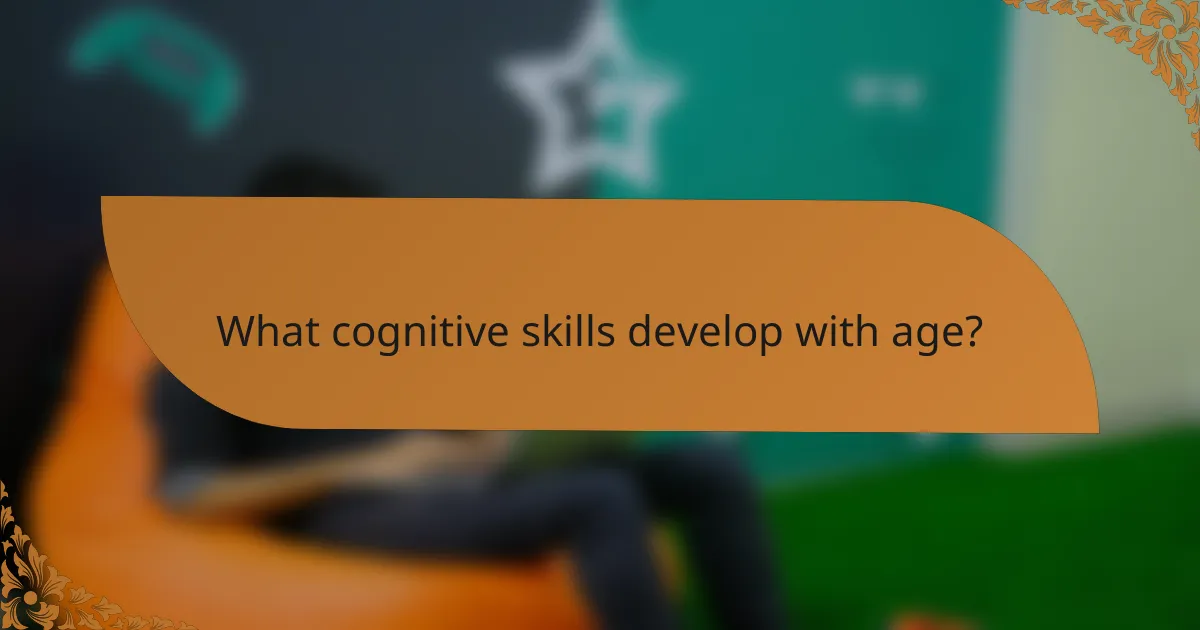
What cognitive skills develop with age?
Cognitive skills such as memory, critical thinking, and language abilities evolve significantly as individuals age. These developments can enhance learning pace and adaptability, impacting both personal and professional growth.
Memory retention improvements
As people age, their memory retention often becomes more robust due to accumulated knowledge and experience. Older adults may find it easier to recall information by connecting new data to existing memories, leveraging a technique known as associative memory.
To enhance memory retention, engaging in regular mental exercises, such as puzzles or memory games, can be beneficial. Additionally, maintaining a healthy lifestyle that includes proper nutrition and physical activity supports cognitive function.
Critical thinking enhancement
With age, individuals typically develop stronger critical thinking skills, allowing for better problem-solving and decision-making. This improvement is largely attributed to the wealth of experiences that provide context and perspective when evaluating situations.
To foster critical thinking, older adults should practice analyzing various viewpoints and engaging in discussions that challenge their assumptions. This can be achieved through reading diverse materials or participating in community debates.
Language acquisition milestones
Language skills often improve with age, as individuals gain exposure to more complex vocabulary and grammatical structures. Older adults may find themselves better at understanding nuances in language, which can enhance communication effectiveness.
To support language acquisition, engaging in reading and writing activities can be particularly helpful. Joining book clubs or language classes can also provide opportunities for practice and interaction, further solidifying these skills.
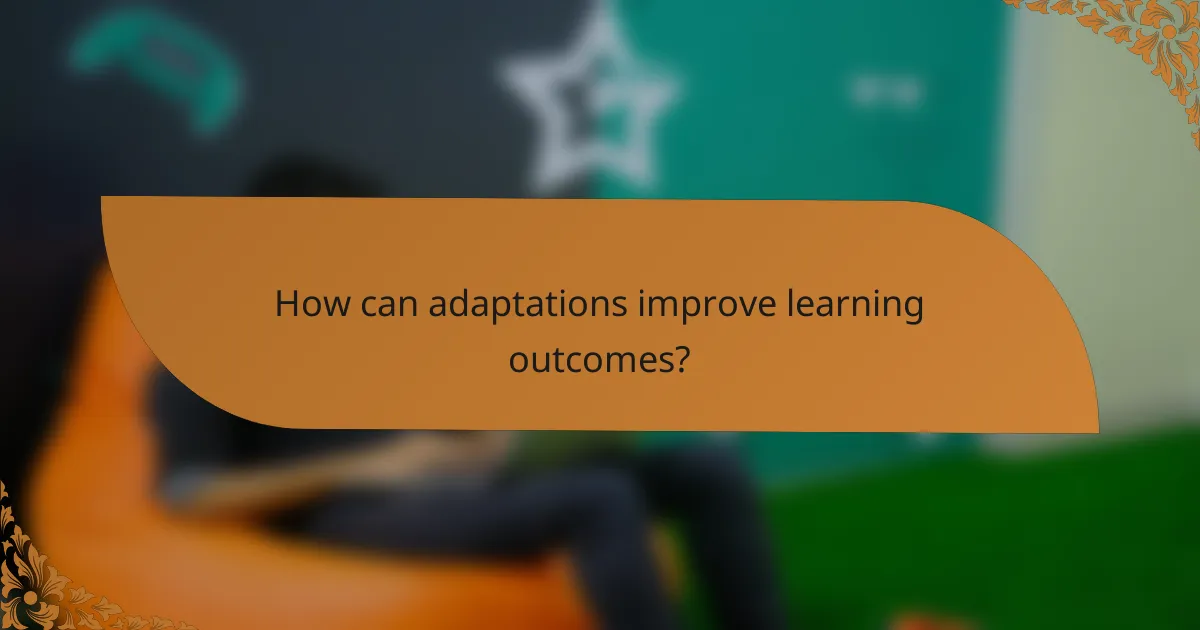
How can adaptations improve learning outcomes?
Adaptations can significantly enhance learning outcomes by tailoring educational experiences to meet individual needs. These adjustments help accommodate various learning styles, cognitive abilities, and paces, ultimately fostering a more effective learning environment.
Use of technology in education
Technology plays a crucial role in improving learning outcomes by providing interactive and engaging resources. Tools such as educational apps, online platforms, and virtual classrooms allow learners to access materials at their own pace and revisit challenging concepts as needed.
Consider incorporating tools like learning management systems (LMS) that track progress and offer personalized feedback. This can help identify areas where students may need additional support or resources.
Personalized learning plans
Personalized learning plans are tailored strategies that address the specific needs and goals of each learner. By assessing individual strengths and weaknesses, educators can create customized pathways that optimize the learning experience.
To implement personalized learning, start by conducting assessments to identify each student’s learning style and pace. Then, develop a plan that includes targeted goals, resources, and timelines to ensure that students remain engaged and motivated.
Incorporation of multisensory approaches
Multisensory approaches involve engaging multiple senses to enhance learning and retention. This method can be particularly effective for learners who struggle with traditional teaching methods, as it caters to various learning preferences.
Examples of multisensory techniques include using visual aids, hands-on activities, and auditory materials. For instance, combining reading with interactive elements like videos or physical manipulatives can help reinforce concepts and improve understanding.
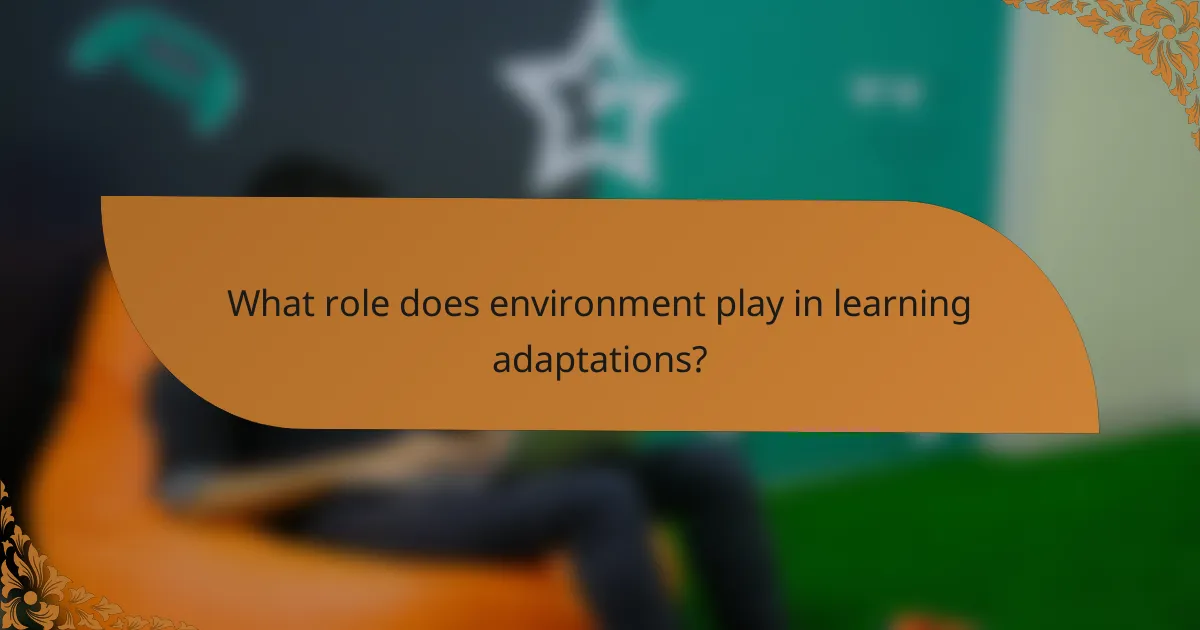
What role does environment play in learning adaptations?
The environment significantly influences learning adaptations by shaping how individuals engage with educational content and interact with peers. Factors such as classroom design, access to resources, and supportive interactions can enhance or hinder cognitive development and learning pace.
Classroom design and layout
Classroom design and layout play a crucial role in facilitating effective learning. An open and flexible space can encourage collaboration and movement, while traditional rows may limit interaction. Consider incorporating varied seating arrangements, such as clusters or circles, to promote discussion and engagement.
Additionally, natural lighting and color schemes can impact mood and focus. A well-lit, inviting environment can enhance concentration and reduce stress, making it easier for students to adapt their learning strategies.
Access to resources and materials
Access to diverse resources and materials is essential for effective learning adaptations. Students benefit from a variety of learning tools, such as books, technology, and hands-on materials, which cater to different learning styles. Schools should strive to provide equitable access to these resources to support all learners.
Incorporating digital resources can also enhance learning experiences. For instance, online platforms can offer interactive content and personalized learning paths, allowing students to progress at their own pace and adapt their learning strategies accordingly.
Supportive peer interactions
Supportive peer interactions are vital for fostering a collaborative learning environment. Positive relationships among students can lead to increased motivation and a willingness to share knowledge. Encouraging group work and peer feedback can enhance understanding and help students adapt their learning approaches.
It’s important to create a culture of respect and inclusivity in the classroom. Establishing ground rules for communication and collaboration can help ensure that all students feel valued and supported, ultimately enhancing their learning adaptations.
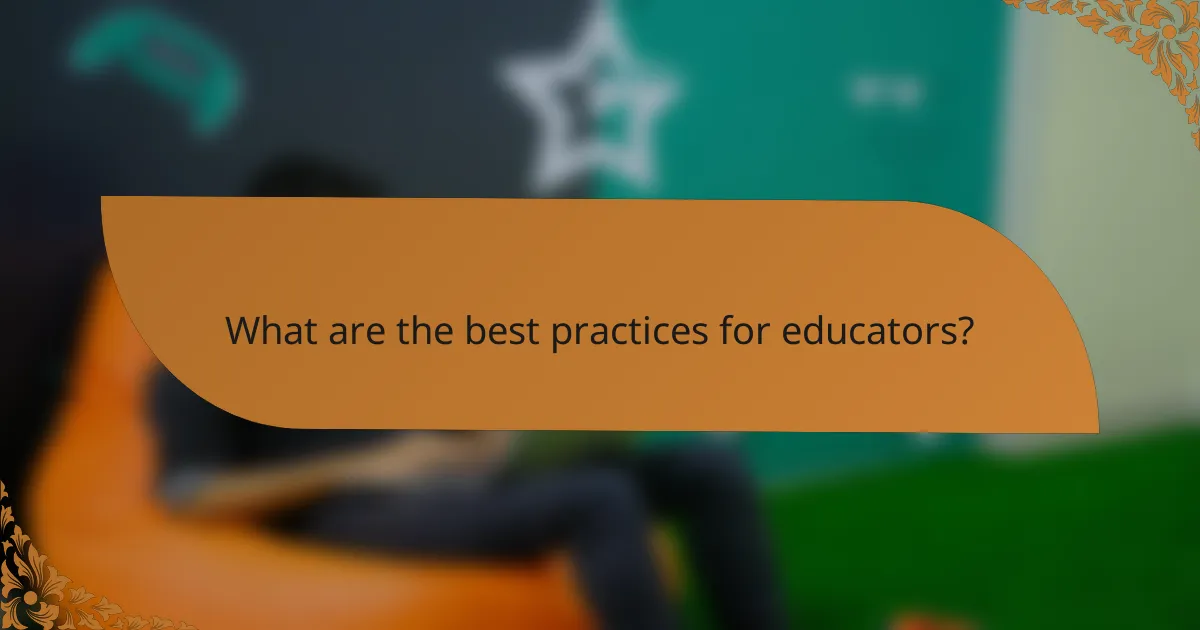
What are the best practices for educators?
Effective practices for educators focus on adapting teaching methods to accommodate varying learning paces and cognitive skills across different age groups. Implementing these strategies can enhance student engagement and improve educational outcomes.
Continuous professional development
Continuous professional development is essential for educators to stay updated on the latest teaching methodologies and cognitive research. Regular training sessions, workshops, and online courses can equip teachers with new strategies to address diverse learning needs.
Educators should seek opportunities to collaborate with peers and share insights from their experiences. This can foster a culture of learning within the teaching community, ultimately benefiting students.
Collaborative teaching strategies
Collaborative teaching strategies involve educators working together to create a more inclusive learning environment. Team teaching, where two or more teachers share responsibility for a class, can provide varied perspectives and expertise, catering to different learning styles.
Incorporating group work and peer tutoring can also enhance student learning. These methods encourage students to learn from one another, promoting social skills and deeper understanding of the material.
Regular assessment and feedback
Regular assessment and feedback are crucial for understanding student progress and adapting instruction accordingly. Formative assessments, such as quizzes and informal observations, can help educators identify areas where students may struggle.
Providing timely and constructive feedback allows students to reflect on their learning and make necessary adjustments. Educators should aim for a balance between assessment types to ensure a comprehensive understanding of each student’s needs.

How do cultural factors influence learning pace?
Cultural factors significantly impact learning pace by shaping expectations, motivation, and communication styles. These elements can either accelerate or hinder the learning process depending on the cultural context in which an individual is situated.
Variations in educational expectations
Different cultures have varying educational expectations that can influence how quickly individuals learn. For instance, in some cultures, academic achievement is highly prioritized, leading to a faster pace of learning as students are encouraged to excel from an early age. In contrast, other cultures may emphasize holistic development, which can result in a more gradual learning process.
Understanding these variations is crucial for educators and learners alike. For example, a student from a culture that values rote memorization may struggle in an environment that promotes critical thinking and creativity, potentially affecting their learning speed.
Impact of cultural values on motivation
Cultural values play a significant role in shaping motivation, which directly affects learning pace. In cultures that emphasize collective success, students may feel motivated to learn quickly to contribute to group goals. Conversely, individualistic cultures may foster personal achievement, leading to different motivational drivers and potentially varying learning speeds.
For instance, a student motivated by family expectations may push themselves to learn faster, while another driven by personal interest may take a more leisurely approach. Recognizing these motivational influences can help tailor educational strategies to better suit individual learners.
Differences in communication styles
Communication styles vary widely across cultures and can impact how information is conveyed and absorbed. Cultures that favor direct communication may facilitate quicker understanding and learning, while those that rely on indirect communication might slow the process as learners navigate subtleties and implied meanings.
For example, a student accustomed to explicit instructions may find it challenging to adapt to a learning environment that uses more nuanced communication. Educators should be aware of these differences to enhance comprehension and learning efficiency.
